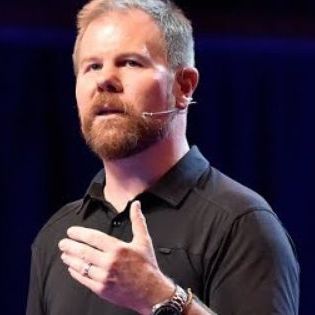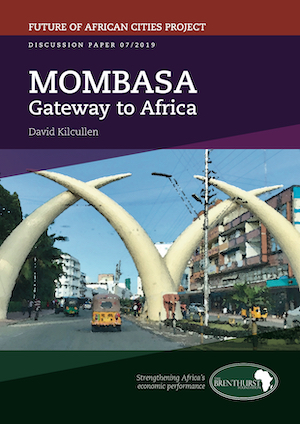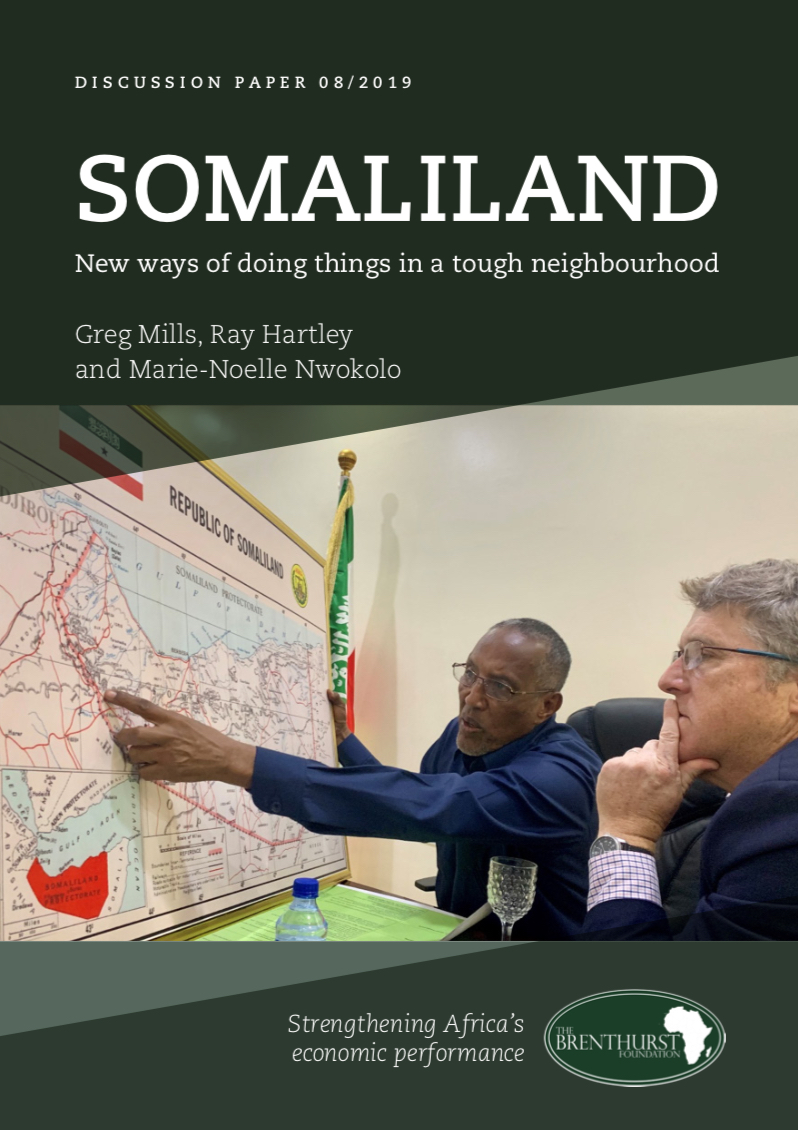Publications
Mombasa - Gateway to Africa
Written by David Kilcullen, this paper, part of the Brenthurst Foundation’s Future of African Cities project, draws on documentary research conducted throughout 2018–19 and on fieldwork during 2019 in Mombasa and surrounding coastal districts. It examines the city through the lens of its gateway role, and the tension between that role and the interests of Mombasa itself. The paper explores the contrast between coast and hinterland, the trade-off between hardware and software, and between practical and aspirational goals. Like other papers in this series, it suggests ways in which other African cities might learn from Mombasa.
Mombasa has been a trading hub for a millennium, connecting inland Africa with global sea-borne trade. Under the Portuguese empire and the Sultanate of Zanzibar the city’s Swahili traders ranged far inland for slaves and for up-country commodities, which they sold onward in exchange for a huge variety of global goods. The slave trade drew the ire of the British in the early 19th century, but Britain’s ‘dog-in-the-manger’ attitude to East Africa meant it was only German interest in the region, after 1884, that provoked London to colonise Kenya.
The Uganda Railway, built in the late 1890s, opened up Kenya, connected the coast with the Great Lakes region, transformed Mombasa into a rail and shipping hub, and spurred urban growth, but imposed stresses on the city’s water supply, sanitation and housing. It also brought a power shift – from coastal to inland regions, Mombasa to Nairobi, and Swahili to up-country population groups. These groups, who spearheaded the push for independence from Britain, have dominated Kenya since 1963, contributing to regional tensions that still affect Mombasa today.
As the city has grown, the balance between hardware – transport, infrastructure, the urban fabric – and software, including health, education and, more recently, digital telecommunications and computing, has become a key issue. Coastal and religious tensions led separatists and jihadists in Mombasa to engage in violence and terrorism in the early 21st century, prompting harsh crackdowns that only exacerbated the problem. Since Devolution, under Kenya’s new 2010 constitution, the re-organised County Government of Mombasa has focused on inclusive, locally-consultative means to prevent and counter violent extremism, with considerable success. The same consultative approach infuses the city’s approach to urban upgrad- ing, infrastructure development, and the improvement of economic opportunities. Yet insider-outsider, and coastal-inland tensions still remain – notably in the uneven (and in many ways quite negative) impact of the Chinese-funded Standard Gauge Railway (SGR) built in 2016–18 to replace the collapsing British-built railway. Highly aspirational plans for Mombasa’s growth to 2035 can seem quite unrealistic in this context, but the city’s track record since devolution, of consultative engagement, public consultation and practical, realistic approaches to funding and implementing of projects, suggests that Mombasa will offer many lessons for other African cities in the future, even as its history offers both positive and negative insights about what it means to be a Gateway to Africa.



